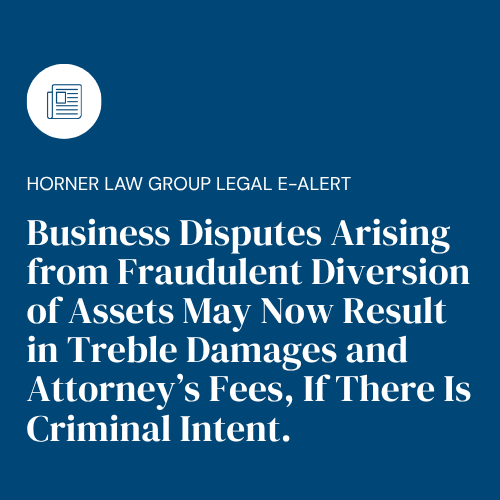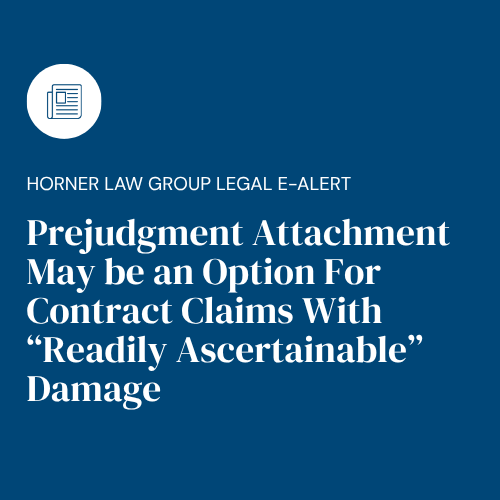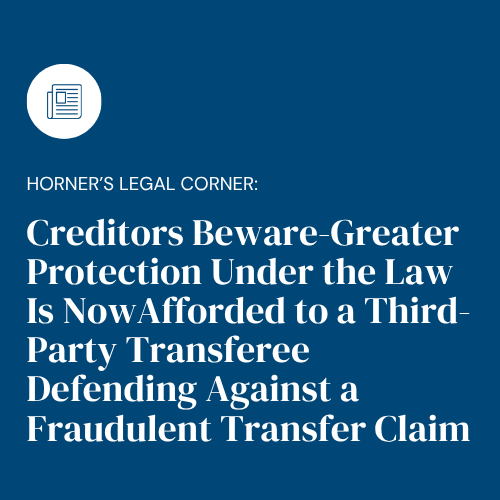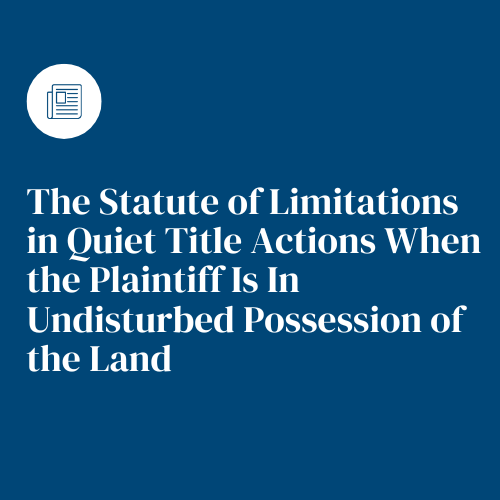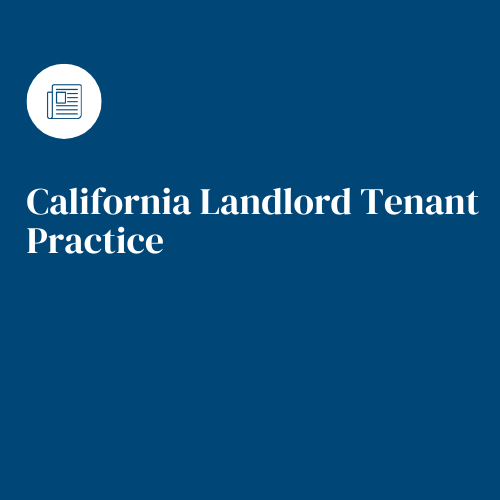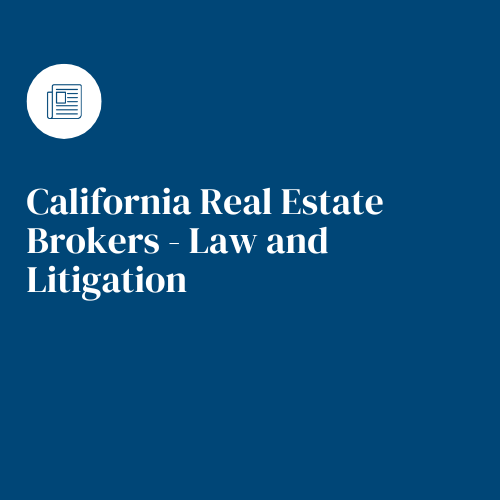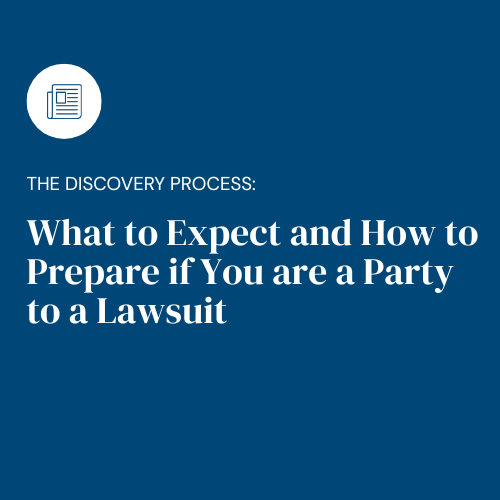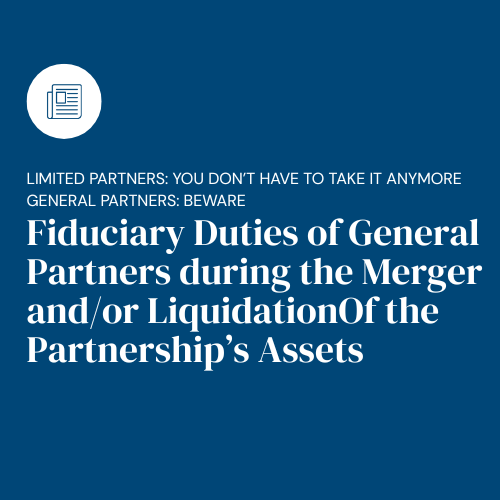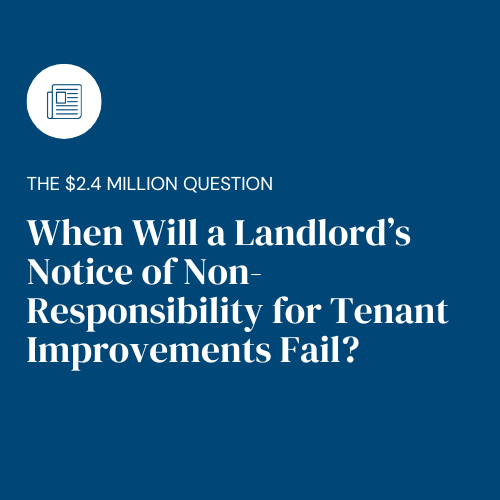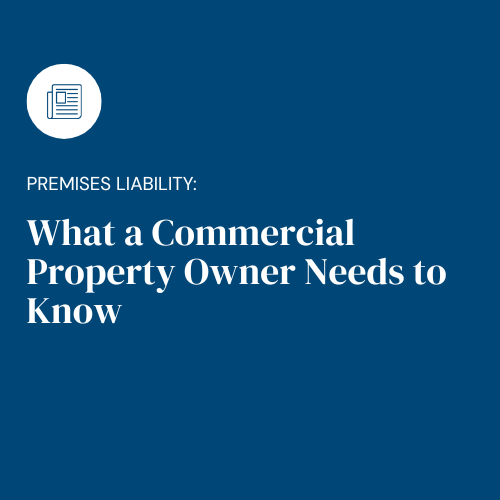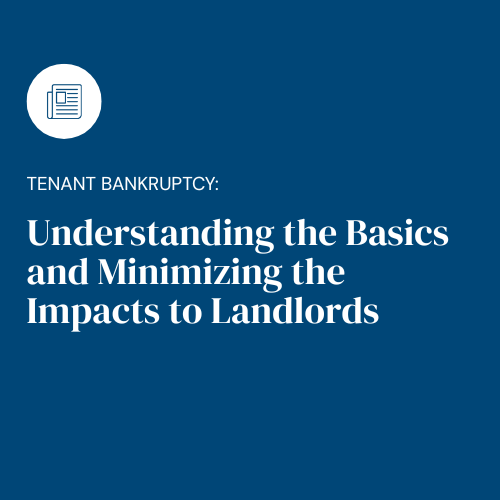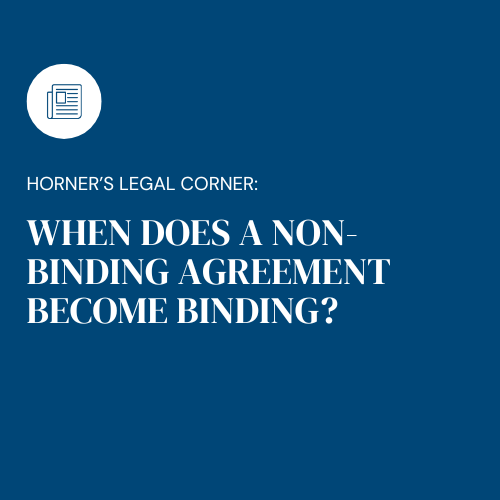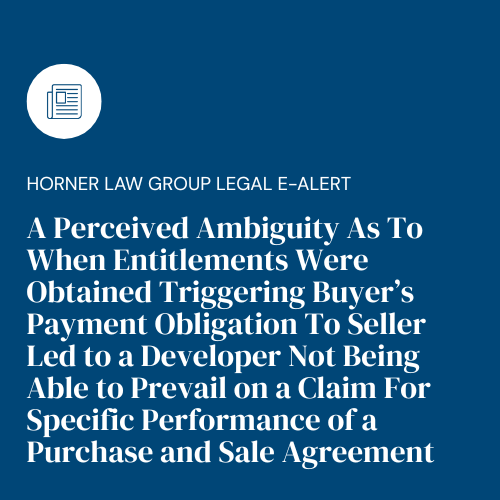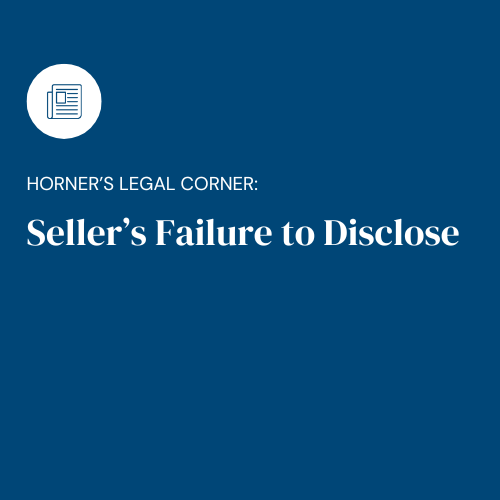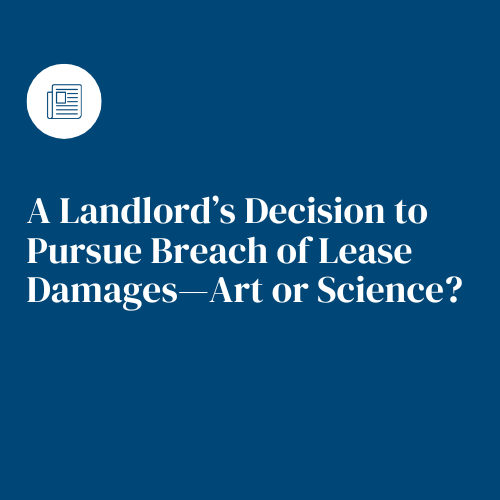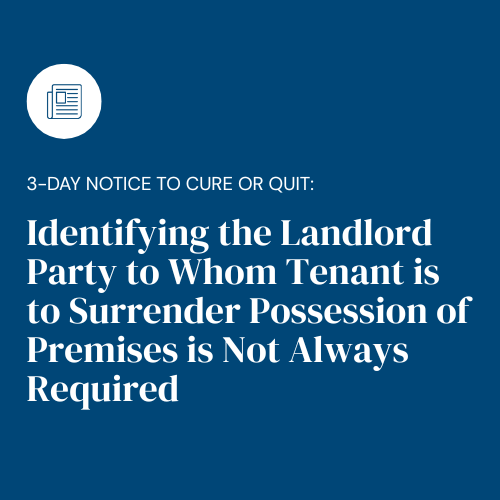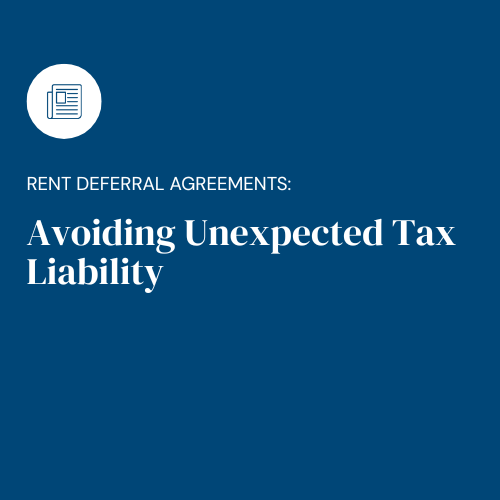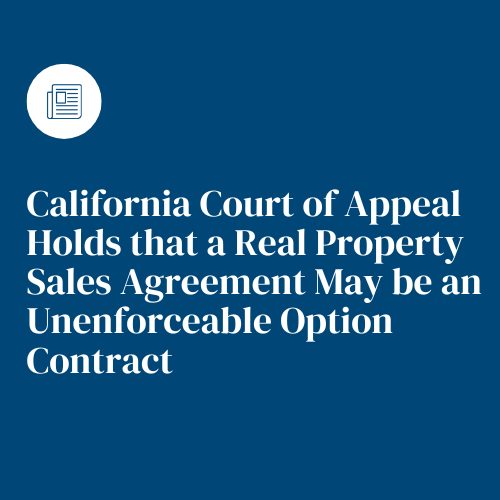Tenant Bankruptcy:
Understanding the Basics and Minimizing the Impacts to Landlords
CONTACT
Cliff Horner
Author: Clifford R. Horner
With the recent economic downturn, the number of business bankruptcies has skyrocketed. Commercial landlords have been forced to deal head on with the subject of tenant bankruptcy. Landlords dread tenant bankruptcy, mainly because they anticipate the premises will be tied up in the bankruptcy court and rental loss will ensue. The ripple effect on smaller tenants in the retail context can be devastating.
This article will address some of the basic points of law involved in a tenant bankruptcy and, more importantly, provides landlords with practical advice on how to take steps to insulate themselves and secure the financial performance of the lease to the extent possible. Many of the techniques contained in this article, if properly implemented, can help landlords minimize the effects of tenant bankruptcy on their bottom line.
Bankruptcy Automatic Stay
When a tenant files a petition for bankruptcy, an automatic stay is created by law. The landlord specifically cannot:
(i) serve a three-day notice;
(ii) commence or continue to prosecute an unlawful detainer or ejectment action; or
(iii) take any action to enforce its rights, including lockouts or utility shut-offs.
What Leases Become Part of the Bankrupt Estate?
Only valid and unexpired leases become "property" of the tenant's bankruptcy estate. Leases which have expired by the end of their term pre-bankruptcy are not part of the bankruptcy estate. (However, as a practical matter if the tenant is still in possession this makes little difference because no sheriff will evict a holdover bankrupt tenant without a relief from stay order from the bankruptcy court).
Leases that have terminated due to the expiration of a 3-Day Notice (e.g. for non-payment of rent) pre-bankruptcy also do not become part of the bankruptcy estate. Between 1999 and 2002, if a landlord had prosecuted its state-court UD action and received a judgment, that judgment would be enforced by many sheriffs because the Court correctly ruled that after a UD judgment had been entered by a state court and the Lease deemed forfeited, there was no lease left for the bankruptcy estate to "assume." (See e.g. Lee v. Baca (1999) 73 Cal.App.4th 1116.) However, a 2002 Bankruptcy Court effectively overturned Lee v. Baca, holding that a tenant in possession under an expired and forfeited lease still possessed an "equitable interest" in the property, which interest was deemed part of the
As such, today relief from the automatic stay is required even if a UD judgment issued pre-filing.
Landlords Rights During the Assumption/Rejection Period
When a tenant files for bankruptcy, it has 60 days to assume or reject the Lease. During this assumption/rejection period, the tenant is required to timely perform all obligations under the Lease, including the payment of post-petition rent, without any requirement by the Landlord to make any motion or provide notice. The tenant must pay the rent at the Lease rate (not at a presumed "market rate"). This rent must also be paid whether or not the tenant is actually using the premises.
This 60-day extension/rejection period can be extended by the Tenant, and with a minimal showing of good cause this request is routinely granted. However, any landlord who has not been paid current should object to any such extension and demand that either its Lease be rejected or the debtor be forced to come current with the post-petition rent owed.
If the tenant falls behind in its post-petition rent obligations prior to its rejection of the Lease, the owner should immediately ask the Court by a filed motion to force the debtor to return possession of the Premises to the landlord or come current on the rent owed. This request is routinely granted.
Debtor's Assumption of the Lease
During the assumption/rejection period, the debtor/tenant may decide to assume the lease and/or then assign the lease to a third party. Upon any such assumption, the debtor must promptly pay all back rent owed (both pre-and post-petition), and must provide "adequate assurance" of its future performance under the Lease (which is usually found if the debtor brings the rent current and has filed a plan of reorganization).
The debtor must also assume or reject the entire lease—it cannot pick and choose between lease provisions, with a few exceptions (e.g. anti-assignment, rent recapture, and cross-default provisions are generally held inapplicable). A clause increasing the rent upon any assignment would also be held invalid. On the bright side, however, post-assumption, all further rents owed become administrative expenses of the estate entitled to a high priority in line for payment.
Special rules also apply to shopping center leases. In addition to curing defaults and providing adequate assurance of future performance, a shopping center tenant wishing to assume and assign its lease must also show that any percentage rent being paid would not decline under the assignment, that the assignee's business would not violate any radius, use, location or exclusivity clause in either the lease or in any other lease in the shopping center, and that the assignment would not disrupt the tenant mix. These rules ensure the vibrancy of the center and also protect the owner from being put in default of any of its other Leases due to such an assignment. Like many other owner rights in bankruptcy, however, the owner must stay abreast of the bankruptcy case, and timely bring any of these objections before the Court.
Debtor's Rejection of the Lease
The debtor may reject the Lease at any time during the first 60-Day period. Otherwise, the rejection of all Leases is deemed automatic on the 61st day after filing (unless the debtor has already assumed the Lease or requested an extension of time to decide).
Upon rejection, the debtor may conduct reasonable going-out-of-business sales. (Any lease preclusions to the contrary are unenforceable). Anti-go dark provisions are also unenforceable. Upon rejection, the tenant is also required to immediately return possession to the landlord (without the requirement of any notice or motion by the owner). If possession is not voluntarily returned, the Court upon request will issue an order for the turnover and can issue a writ of possession in favor of the owner with the eviction enforced by the U.S. Marshall.
Landlord's Damages
The rejection of a lease converts the pre-petition default and damages into an unsecured claim in the case. (Post-petition and pre-rejection claims have priority.) Assuming the landlord files with the bankruptcy court a timely proof of claim, the damages a landlord is able to claim for the non-priority portion are limited by the following:
(i) pre-petition rent due under the lease, plus
(ii) rent reserved under the lease (future rents), for the greater of one year or 15 percent of the remaining term of the lease (not to exceed three years) following the earlier of the date of the filing of the petition for bankruptcy, or the date the landlord repossessed the premises or the tenant surrendered the premises.
Reserved rent means rent or additional rent. Only rent or additional rent are collectible in an unlawful detainer action. Similarly, only rent and additional rent are collectible by the landlord in the bankruptcy, subject to the limitations discussed in this section. Landlords should therefore be certain that their lease forms contain a clause capturing all lease obligations as "Additional Rent."
Typical Landlord Questions:
1. Can I be Forced to Return Rent after it has been Paid?
A. Potentially. Any rent or other payments made by the debtor within the 90-day period before the filing of bankruptcy are arguably "preferential payments" subject to recoupment by the bankruptcy trustee. Landlords, however, have some very good defenses to these claims as follows:
Ordinary Course Defense:
If the owner can show that the payments were "ordinary" or "typical" with respect to industry and the parties' past practices, then disgorgement is not required.
New Value Defense:
If new value were given by the owner for the payment (e.g. waiver of late fees, rent reduction, etc.), then likewise no disgorgement will be required.
2. Can I Apply the Security Deposit to the Rent Owed?
A. No. However, the landlord does possess a perfected secured claim and lien in the amount of the deposit held. As such, in most instances, the owner will be entitled to keep this money as a set-off against its damages claim at the conclusion of the case or at the confirmation of the chapter 11 plan.
Are Letters of Credit Advantageous?
A. Yes. Because letters of credit do not constitute property of the bankruptcy estate, presentation of a letter of credit to a bank for payment by an owner does not violate the automatic stay. Letters of credit also, if properly drafted, should not be subject to the one-year damages cap and should be redeemable without any notice or presentation requirement to the debtor/tenant.
Minimizing the Effects of Tenant Bankruptcy
While a tenant bankruptcy can be daunting for a commercial landlord, with a very basic understanding of the effects of bankruptcy, there are certain steps a landlord can take to protect itself. The following are some concepts landlords should consider incorporating into their lease to protect themselves from tenant bankruptcy:
1. Letters of Credit v. Security Deposit.
Letters of credit have some advantages over traditional cash security deposits. Traditional cash security deposits become part of the debtor's estate and are subject to the automatic stay. A letter of credit generally is not regarded as an asset of a bankrupt tenant's estate because of the independence principle. The letter of credit therefore may be drawn upon for rent obligations as they become due even after a tenant has filed a petition for bankruptcy. A draw upon a letter of credit should be construed as a draw upon the issuing bank's assets instead of the tenant's. The wording of the letter of credit is crucial, however, in determining whether the independence doctrine will apply.
For example, one limitation on the letter of credit is that it is often negotiated by attorneys such that the letter of credit can only be drawn upon for the payment of rent, and no other lease obligations. The letter of credit also is frequently drafted such that draws upon the letter of credit for rent can only be made when the rent is due. In effect, the landlord cannot draw upon the letter for funds that are not yet due and owing, even though the tenant may be in default of the lease, or may have vacated the premises. Said another way, the letter of credit often cannot be drawn upon for accelerated rent.
2. Independent Obligation for Tenant Improvements.
An approach similar to the security deposit discussion above may be used by owners to secure the repayment of tenant improvement allowance obligations outside of the tenant's obligation to pay rent.
The tenant improvement allowance is seen by many as a disguised loan from landlord to tenant, which is repaid in the form of increased rent over the term of the lease. With the timing limitation on damages collectible by the landlord in a tenant bankruptcy, it is unlikely that a landlord will fully recapture unamortized tenant improvement allowance funds for the term of the lease. The tenant improvement allowance, if the lease is not near expiration when the tenant files the petition, will likely become a casualty of the bankruptcy.
By creating a separate obligation for the repayment of the unamortized tenant improvement allowance, a landlord may be able to circumvent the claim-limiting effects (e.g. one-year's rent) of the bankruptcy. To the extent a tenant will agree, the owner may want to create a separate obligation, outside of the lease, in the form of a promissory note and personal guaranty, for the repayment of unamortized tenant improvement allowance funds. With a marginally creditworthy tenant, the tenant may be more willing to accept this scenario in lease negotiations. A smaller or marginally creditworthy tenant may already expect to sign a personal guaranty as part of its lease deal. Obviously, asking a tenant to sign multiple personal guaranties may be daunting, and even cost a landlord a deal. Presumably, the lease guaranty and the tenant improvement guaranty could be combined to avoid this "deer in the headlights" effect with the tenant. By creating an independent obligation for the repayment of the tenant improvement allowance, the landlord may be able to avoid losing the unamortized portion of the tenant improvement allowance funds in a tenant bankruptcy.
3. Independent Obligation for Repayment of Unamortized Brokerage Commissions
Another potential area where a landlord may fall short of receiving the benefit of its bargain in the instance of a tenant bankruptcy is the repayment of brokerage commissions. Typical landlords amortize brokerage commissions paid over the term of the lease. Due to the limitations on the damages available to landlords in the case of a tenant bankruptcy, a landlord will not likely recover its unamortized brokerage commissions, unless the lease was very near expiration when the petition was filed. Therefore, to the extent a tenant will agree, the owner may want to secure the repayment of brokerage commissions by means of a promissory note and personal guaranty. Again, the personal guaranty can be combined with the lease guaranty. This strategy may allow the landlord to recover from the tenant funds advanced to brokers in the form of commissions, which the landlord had no expectation of recovering when the tenant filed for bankruptcy protection.
4. Keep your Eyes and Ears Open.
As a practical matter, one of the best methods of avoiding the effects of tenants' bankruptcies is for an owner to keep its eyes and ears open regarding the financial status of its tenants. If tenants are large companies, keep apprised of press releases and published materials. Talk to all tenants and learn about their satisfaction with the building, and how their business is doing. Take every key tenant to lunch periodically. This provides the opportunity to discuss the tenant's business and financial status, their space needs in the future, positive and negative feedback about the building, and to generally market the building for referrals and renewals of existing leases.
5. Stay in Touch with All Parties.
While the tenant bankruptcy process may be frustrating, and a financial drain, the best way a landlord can attempt to secure payment of the lease obligations is to stay informed. Talk to the tenant regularly about the progress of the bankruptcy and whether the tenant expects to re-emerge from it. Have your counsel communicate with the bankruptcy trustee about whether it intends to accept or reject the lease, and what rent payments the landlord can expect to receive under either scenario. Talk to the trustee about the tenant's assets and debts, and seek information about what percentage of the total amount owed is expected to be paid to creditors. Ask whether any unsecured debt will be paid, or whether it appears only secured debt will be paid out of the bankruptcy, and review the details of the reorganization plan. Also, ensure that your counsel understands and is able to pursue your rights vigorously in the bankruptcy court. Every dollar saved by the tenant/debtor not paying the landlord increases the debtor's chances of successfully emerging from the bankruptcy and increases the total dollars available to each of the other creditors of the tenant. As such, in bankruptcy court, a landlord has very few friends and must be able to take care of itself.
Conclusion
Due to the limitations on damages available to a landlord in a tenant bankruptcy and the automatic stay imposed immediately upon the filing of the petition, landlords are not likely to receive the full benefit of the bargain of the lease in a tenant bankruptcy. However, landlords can demand and force the post-petition timely payment of rent, can enforce their third party independent collection rights, and can fight any assumption and assignment of their lease where adequate assurance of future performance is not provided or where such an assignment would violate a lease clause or disrupt the tenant mix in a shopping center.
Finally, securing competent landlord counsel during the bankruptcy can ensure an owner that his rights are fully protected.
Subscribe to Horner Law Group Mailing Lists
Get the latest significant legal alerts, news, webinars, and insights that affect your industry.

